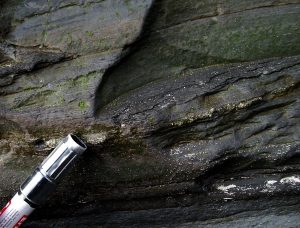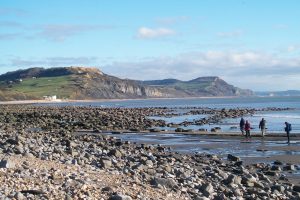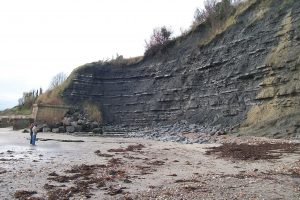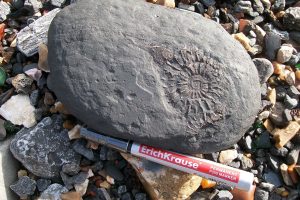Prof. Ross R. Large is the outgoing President of the Royal Society of Tasmania, a UTAS Distinguished Professor and Professor of Economic Geology.
First order trace element (TE) concentrations in the past oceans are controlled by several factors including; composition of eroded source rocks, oxygen and carbon dioxide contents of the atmosphere, ocean pH, temperature, salinity, organic productivity and trace element adsorption capacity. Our recent studies at the University of Tasmania investigating the Laser Ablation-ICPMS trace element chemistry of marine pyrite have tracked TE variations in the oceans, through the Proterozoic and Palaeozoic, and related these to cycles of bio-essential nutrient concentrations, atmosphere oxygen content and mass extinction events (Large et al., 2014; 2015; Long et al., 2015). Certain TE are essential for life (eg, Ni, Cu, Co, Mn, Zn, Se) and have controlled evolutionary pathways (Williams and Rickarby, 2012), other TE are redox sensitive (eg, Se, Mo, Au), and have been used as proxies for oxygen content of the atmosphere, several TE are sensitive to variations in atmosphere/ocean carbon dioxide content (e.g. Cu and U), whereas still others are sensitive to ocean acidity (eg, Ag, Zn, Pb, Bi, Cd, Sb).

Close-up of black shales showing the mineral pyrite (FeS2) silver-yellow that when analysed with a laser gives the clues to ancient ocean chemistry and mass extinctions.
In this talk I outline a multi-proxy approach, using a variety of trace elements and their ratios, from our extensive marine pyrite database. The data indicate broad first orders cycles of concentrations of ocean trace elements that form an internally consistent pattern that can be related to major geological events over the last 1000 Ma. These cycles suggest there have been basically two end member ocean conditions. Warm, nutrient-rich oceans, with relatively low pH (7 to 7.8) and elevated pCO2, are evident in Early to Mid Cambrian, Silurian to Mid Devonian, Carboniferous, Mid-Late Permian and the Jurassic-Cretaceous boundary. The other end member is cool nutrient-poor oceans, with a more alkaline pH (7.8 to 8.4), formed during periods of low pCO2, which dominated the Neoproterozoic, Ordovician, Late Devonian to Early Carboniferous, Early Permian, much of the Mesozoic and the Neogene. The nutrient poor oceans broadly correlate with periods of maximum carbonate reef development, include all the global glaciation events, and three of the five mass extinction events.
This example of a multi-proxy approach, that draws on an extensive marine pyrite database, and considers inter-relationships between key long-term ocean drivers, provides a new integrated interpretation of ocean chemistry over the last 1000 million years.
References
Large RR., Halpin, JA., Danyushevsky. LV., Maslennikov. VV., Bull SW., Long, JA., Gregory, DD., Lounejeva, E, Lyons, TW., Sack, PJ., McGoldrick, PJ. and Calver, CR., 2014, Trace element content of sedimentary pyrite as a new proxy for deep-time ocean-atmosphere evolution: Earth and Planetary Science Letters, v. 389, p. 209-220.
Large R.R., Halpin, J.A., Lounjeva, E., Danyushevsky, L.D., Maslennikov, V.V., Gregory, D., Sack, P.J., Haines, P.W., Long, J.A., Makoundi, C. and Stepanov, A.S., 2015, Cycles of nutrient trace elements in the Phanerozoic ocean: Gondwana Research, v. 28, p. 1282-1293
Long, J.A., Large, R.R., Lee, M.S.Y., Benton, M.J., Danyushevsky, L.V., Chiappe, L.M., Halpin, J.A., Cantrill, D. and Lottermoser, B., 2015, Severe selenium depletion in the Phanerozoic oceans as a factor in three global mass extinctions: Gondwana Research, v. 28, (available online)
Williams, R.J.P. and Rickarby, R.E.M., 2012, Evolution’s Destiny: Co-evolving chemistry of the Environment and Life: Royal Society of Chemistry, Cambridge, UK, 319 pp.
Tuesday 2 February, 8.00 pm Royal Society Room, Customs House Building, TMAG, 19 Davey St. Hobart (entry from Dunn Place)
All interested people are welcome. Free admission.





